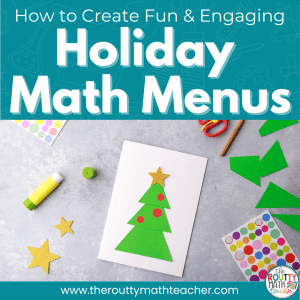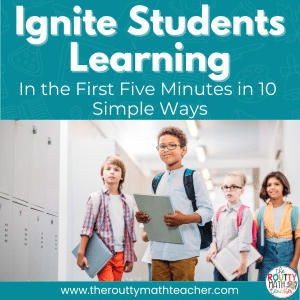
Math Menu Products: 10 Creative Ideas
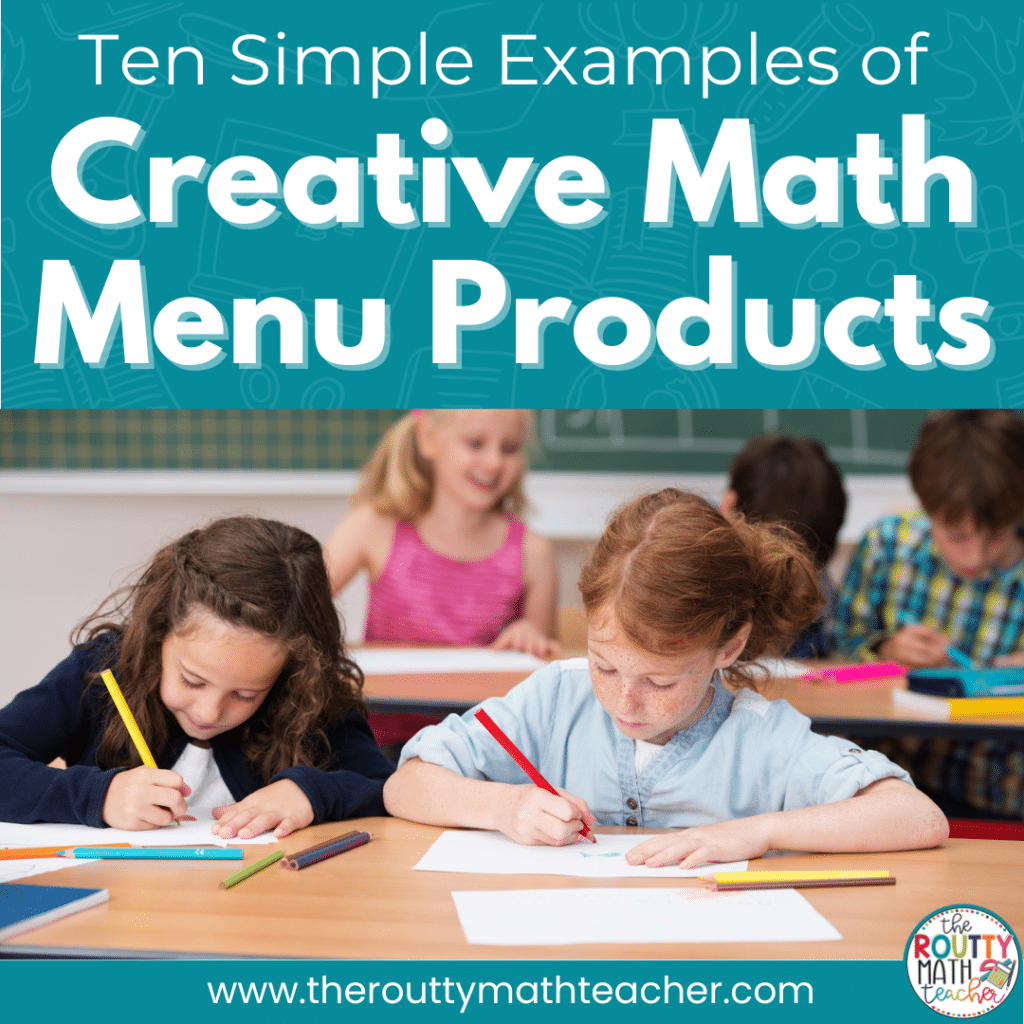
Using math menus in the classroom with my students became a game-changer for me a few years back! I learned the secret to creating engaging menus for my kids that allowed for creativity and choice in the math menu products they selected and tasks they completed. In this post, I share ten of my favorite math menu products that have made using menus a great learning experience for my students.
The silence shocked me!
I couldn’t believe my eyes.
It was a first day like no other.
I didn’t spend the day teaching procedures and initiating get-to-know-you activities.
It felt like greeting an old friend after a long absence.
We picked right up where we left off.
My best two years of teaching happened after the same event . . . looping.
We knew each other . . . well.
These students already understood the expectations and the routines.
They met my challenges last school year.
I knew it was not “business as usual.”
I had students identified as gifted and talented, as well as, a lot of fast finishers and high-performing students, so I wanted to amp up learning and take my instruction to the next level.
I decided to find a new way to channel their energy and provide some additional challenges by using math menus.
How to Differentiate for a Mixed-Ability Class
I often get questions from teachers about how to differentiate for students in the classroom.
My answer is always the same– menus, an underutilized tool that can be a game changer for both students and teachers.
Before this school year, I had not used many menus in the classroom. The ones I had used were okay, but I never found one that met my needs.
I bought a book about menus, Differentiating Instruction with Menus by Laurie Westphal, to learn more about how to build quality menus.
After perusing the book, I created my first menu.
My students loved it and wanted more!
After the first menu, I started creating math menus for each grading period.
Students worked on their menu throughout the day and I provided additional work time during our weekly station rotations.
What I Learned
One of the lessons I learned about using math menus is to keep things simple with only a few menus.
Creating a menu should not create more work for me!
When I started using math menus, I tried filling the task boxes with printed materials because they required less explanation, took less time, and were easier to grade; however, after reading the differentiation book, I decided to try using a variety of student products to fill in the menu task boxes.
This is where the magic happened!
Not only did my students love the creativity and level of choice the products provided, but using the products in this way extended the time required to complete the menu so I could utilize them for a longer period of time.
Genius!
Math Menu Product Ideas
Through the year, several math menu products became class favorites and my go-to tasks.
Here’s a short description of each product:
1. I Have . . . , Who Has?
This is an activity I used a lot in the classroom, so my students were familiar with it. The students enjoy this math menu product because it allows creativity with the task. The cards in the picture were created after a unit on the order of operations. “I Have . . . , Who Has?” cards are easy to create and can be adapted to work with any content. Students create a set of questions and answers. Then, they create cards using the following format:
I have [answer].
Who has [question]?
It’s important to note each card’s question leads to an answer on a different card. When done correctly, the activity creates a loop. The answer indicated on the first card read will be the answer to the last question read.
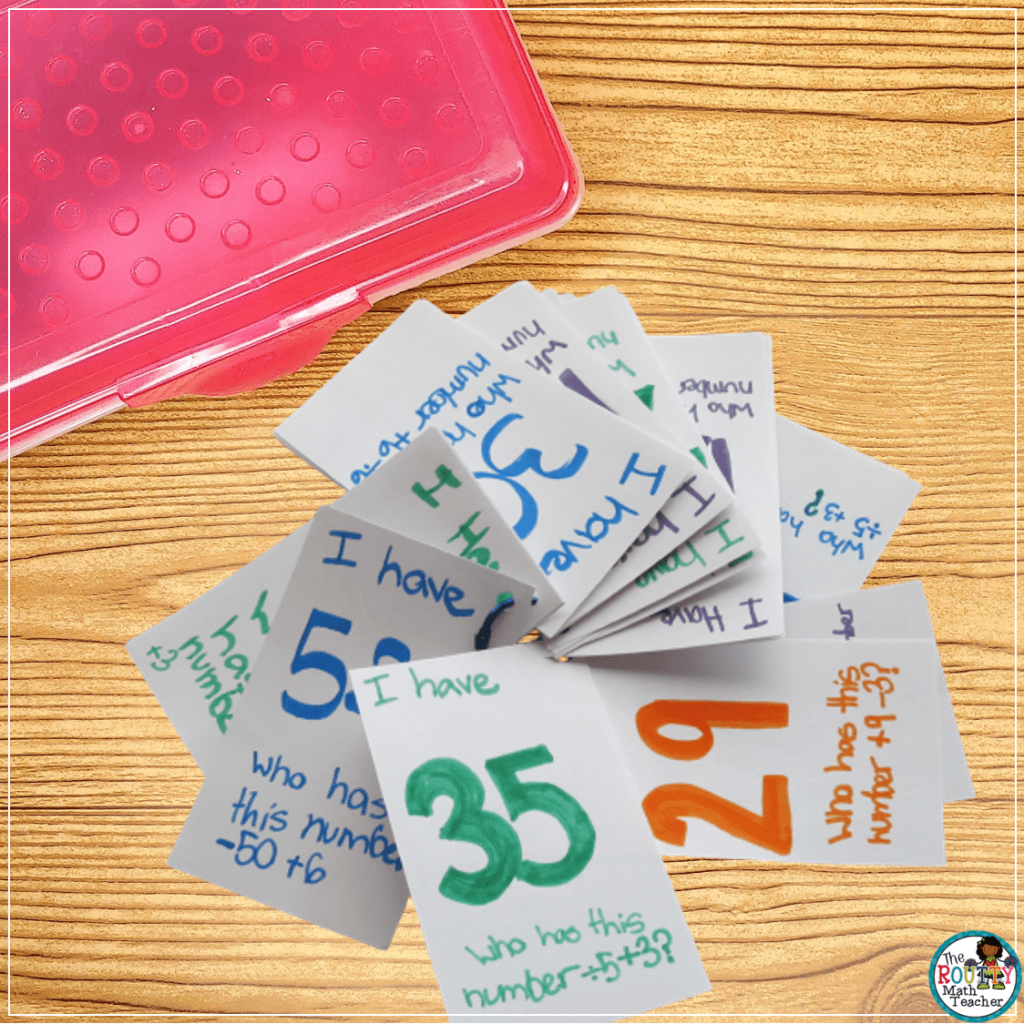
2. Card Games
Students can also use their creativity to create card games to play with a small group of students. The students decide how to structure the game, create a set of instructions, and then decorate the cards and other materials. Popular card games include war-style games and concentration-style activities.
3. Critical Thinking Tasks
I like to use a lot of problem-solving and critical thinking challenges in the classroom, so I often add, “Complete a Puzzle from the Puzzle Box” to the math menu task sheet. Students love these tasks! They require different thinking than the projects do which provides a good variety for students who don’t like to create products. The task in the picture is a critical thinking task from AIMS Education’s “Solve It! 4th.”
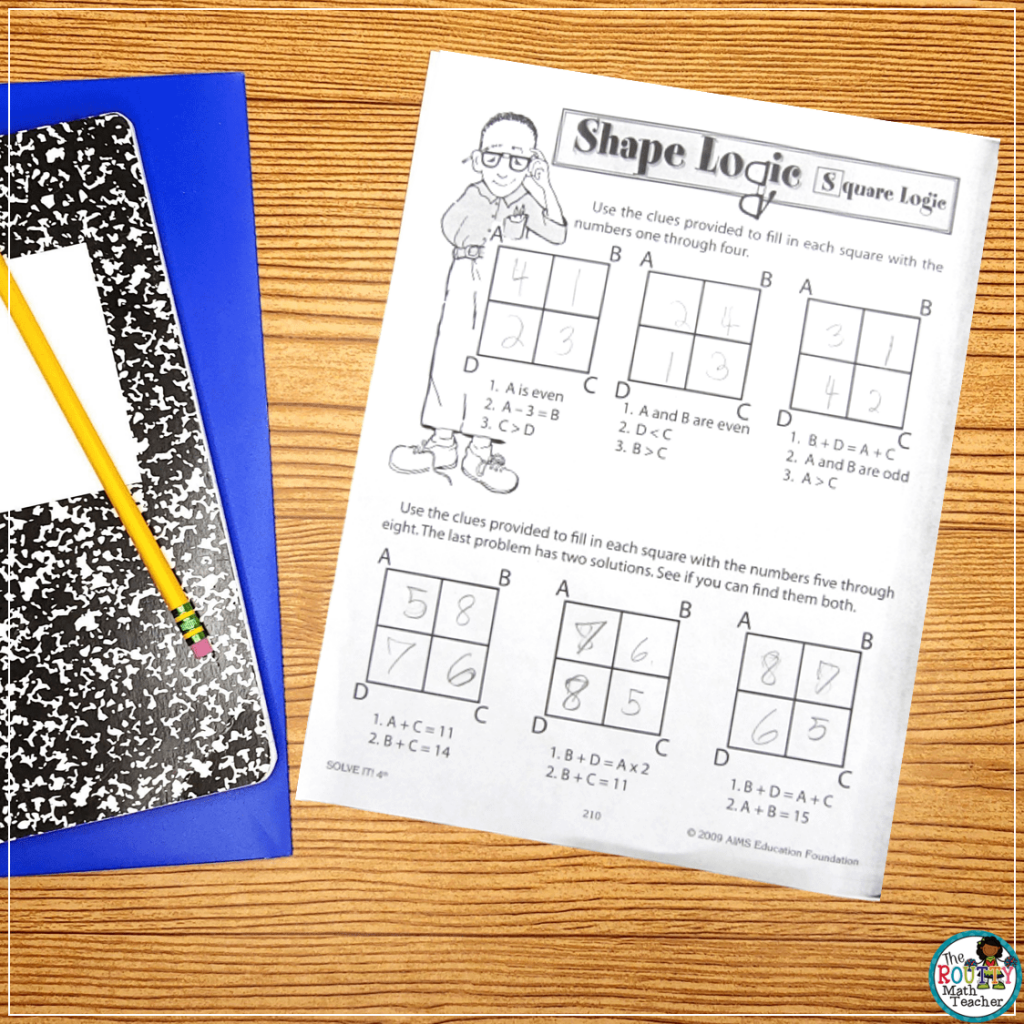
4. Magic Square
Students use the concept of a magic square to create a fun practice page. A traditional magic square is a square table divided into three rows and three columns so each row, column, and diagonal add up to the same value, like 15. This activity is perfect for vocabulary practice. Students letter each of the boxes in the table and connect them to definitions. Then, students number vocabulary words. When students match the vocabulary word to the definition, the magic square begins to appear.
5. Crossword Puzzles
When I wanted to mix up things in the classroom, I started using crossword puzzles in place of traditional worksheets. My students love crossword puzzles, so I started adding them to our math menus as a product option. This product has a low entry-level and is easy to create, so it’s a go-to for many students. Discovery Education’s Criss Cross Puzzle is student-friendly and easy-to-use.
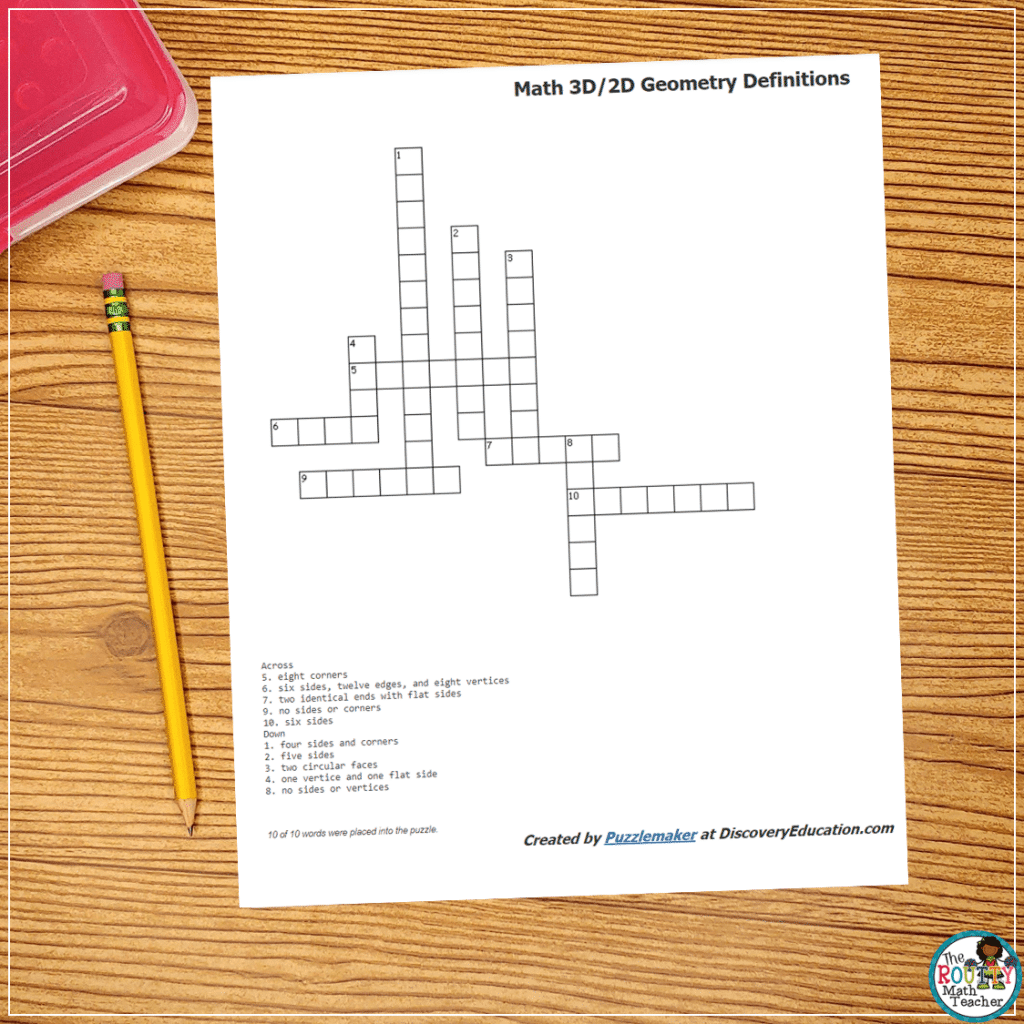
6. Word Find
Several of my students found creative ways to create a word search. For example, one of my students created a word search to practice using the order of operations to simplify numerical expressions. She first created a set of numerical expressions that simplified to a one-word value, like nine, twelve, fifty, etc. She then entered the values into a word search maker. Finally, she wrote the numerical expressions at the bottom of the word search. This was a popular activity for her classmates! After simplifying the order of operations problems, students then searched for the word form of the simplified value in the word search. How fun is that!
7. File Folder Games
This is one for the creatives in the class! A lot of my students enjoy getting to be creative and design their own file folder game. Students design these games with a path for players to follow and a set of question cards (or problems written on the path). Then, students create a set of game instructions and an answer key to accompany the file folder game.
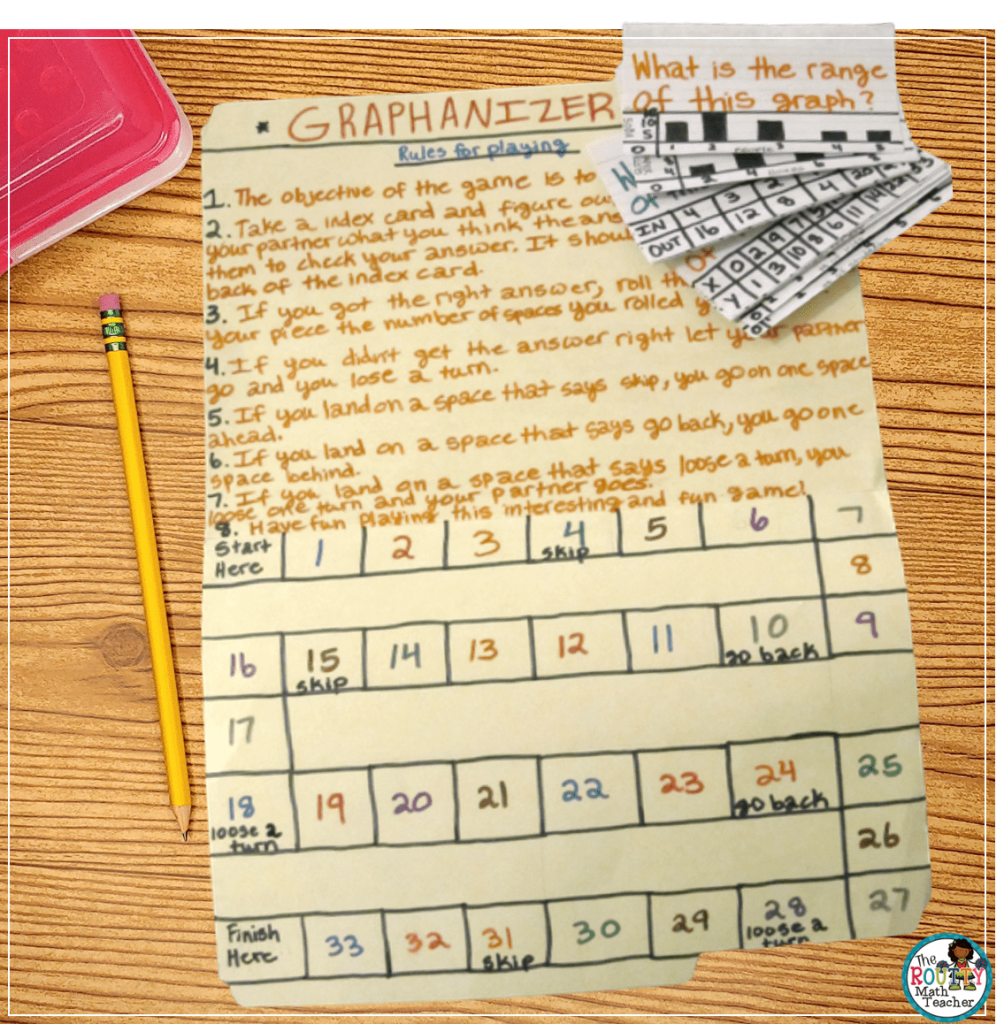
8. Create-a-Graph
This is a quick and easy activity when you need to reinforce graphing skills. There’s also a lot of creativity here! Students select a question for their classmates to answer or data to collect and then create a representation to display the data.
9. 3D Cubes
These cubes are super versatile and work with any content! The ones in the picture below illustrate numerical expressions that simplify to a value of 7. For this product, students were required to submit an answer key demonstrating how to simplify each expression. This is a simple math menu activity with a low entry point because students can make the numerical expressions as simple, or as challenging, as they’d like.
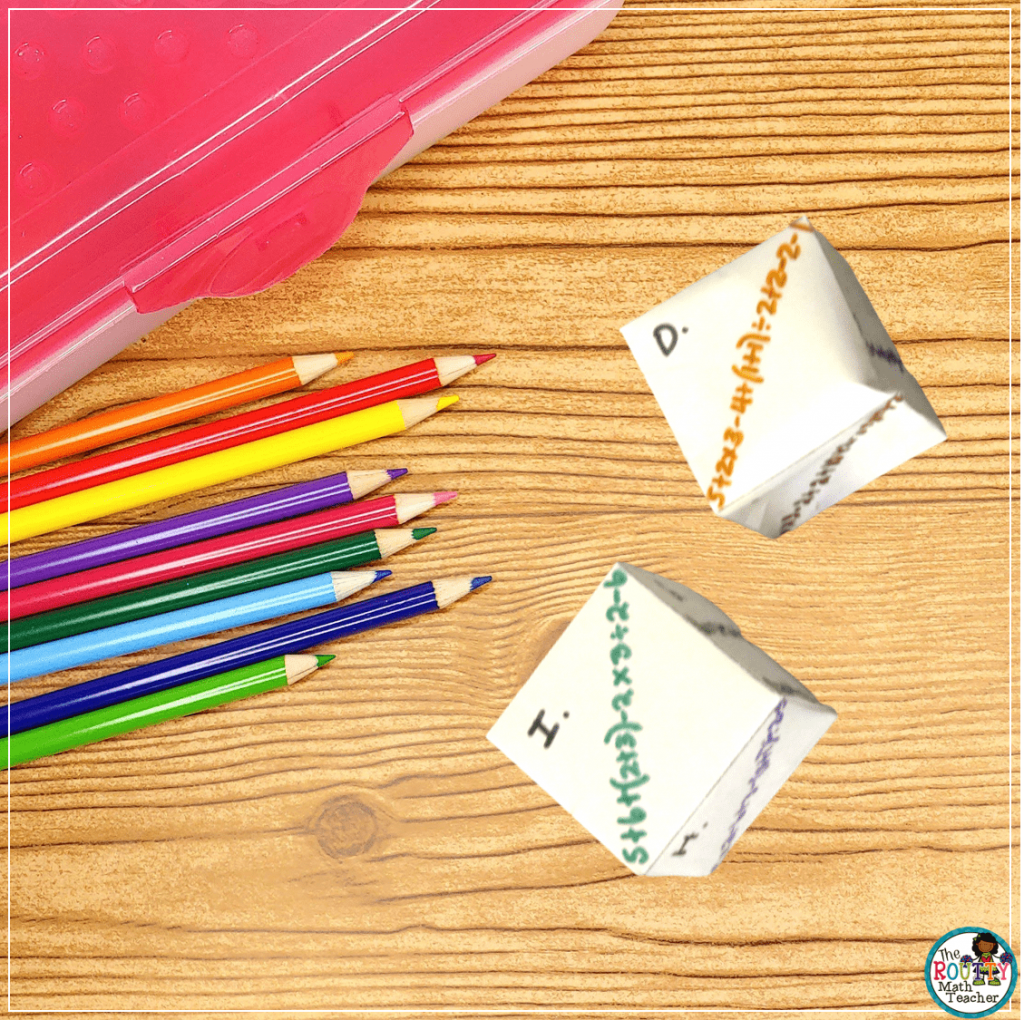
10. Comic Strip
I always have several students who enjoy creating comic strips, like my writers, to illustrate how to perform a skill. The one in the picture is a short story about finding the rule of a function table.
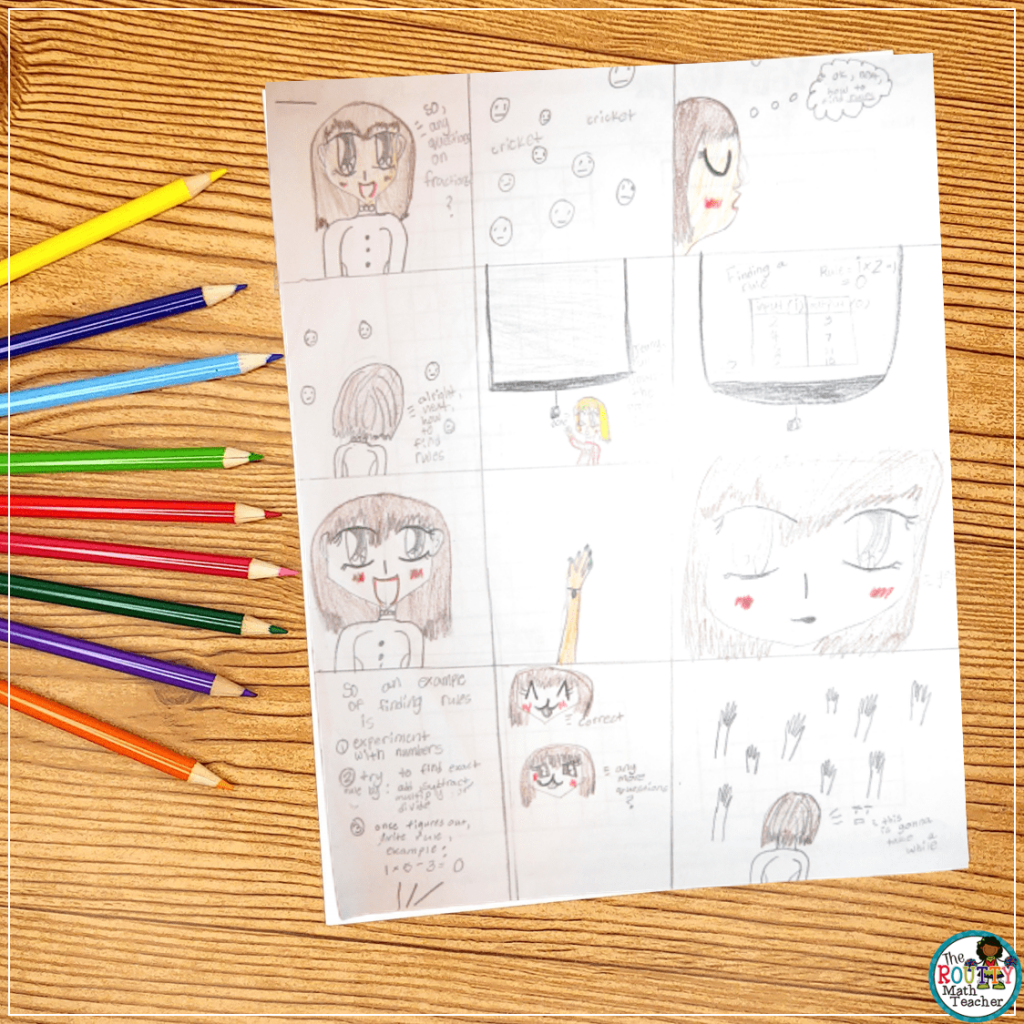
Getting the Most from Math Menu Products
This is only a handful of the products I use on my math menus. There are many others to pick from!
The best part is that the same products can be reused on multiple math menus because when your content changes, the final product does as well. This shortcut allowed me to keep my menus simple because I could use a rotation of products to fill up the menu tasks.
I’ve got one more tidbit for you. While not all of the products can be used in this way, I try to utilize my students’ creations in the classroom as station materials or additional practice. Having their peers use their products provides an extra incentive for students to produce quality work!
Getting Started with Math Menu Products
Ready to take some new product ideas for a spin? Be sure to download a quick reference list of my favorite go-to math menu products. Then, head over to my Teachers Pay Teachers store to grab a free menu from my Math Menus series.
Sound Off!
What are your favorite go-to products? Respond in the comments below.




